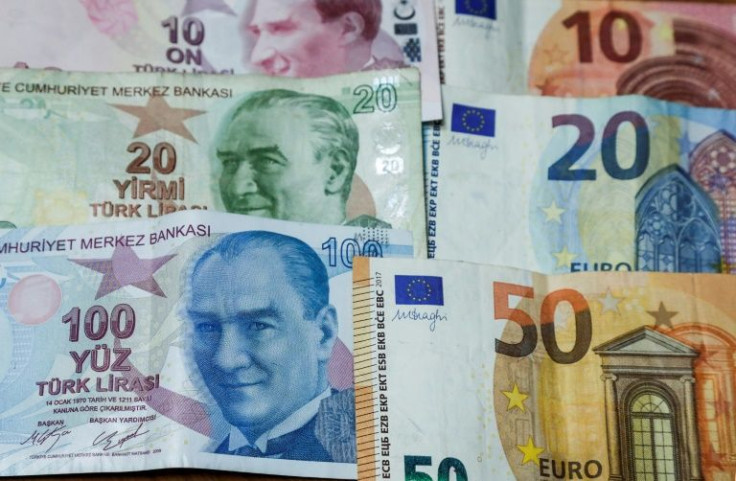Euro Reaches Near-Parity Against The US Dollar: What It Means For Wall Street

The euro continued its slide against the U.S. dollar this week. On Wednesday morning, it was trading at $1.02, close to parity. That's a 20-year low, as the eurozone is heading into a recession and mounting concerns over the state of Germany's economy.
Traders and investors have been selling euros and buying dollars, following a string of macroeconomic indicators showing that the eurozone economy is entering a recession. For instance, the July Sentix Economic Indicator, which tracks investor morale, dipped to a two-year low, pointing to an impending recession.
Then there’s the S&P Global Composite PMI for June, which came at 52, down from 54.8 in May. And there’s a 1.3% decline in retail sales in April, suggesting that consumer spending could decline in the second quarter of 2022, pushing the eurozone’s anemic 0.2% GDP growth for the first quarter of 2022 into negative territory in the second quarter.
Like the U.S. and most economies worldwide, the eurozone economy has suffered from the soaring food and energy prices, which have squeezed family budgets. But the eurozone has suffered more than the U.S., as most of its country members rely on Russian gas imports, which have skyrocketed in price. Germany’s economy has been hit the hardest, with its trade surplus disappearing on higher import prices.
The eurozone's weakening economy and sliding currency could force the ECB to moderate its monetary tightening plans, keeping eurozone interest rates below American interest rates for a prolonged period. And that’s a mixed blessing for Wall Street.
On the one side, it’s a boon for the U.S. Treasury market, as capital will flow from low-yield eurozone Treasury bonds to high-yield U.S. Treasury bonds. For instance, on Wednesday morning, 10-year U.S. Treasuries traded with a yield of 2.83% compared to 1.20% and 1.81% of the 10-year German Treasury and French Treasury bonds, respectively.
This large gap between the Treasury bond yields on the two sides of the Atlantic will cause additional capital flows towards the American side, driving the euro and the U.S. Treasury bond yields even lower.
Lower U.S. yields make the Fed’s job easier as it tries to reverse its Quantitative Easing (QE) policy, meaning that European investors will end up buying the U.S. Treasuries the Fed is selling, preventing long-term interest rates from spiking. And that’s a good thing for equity investors, as lower interest rates help push valuations higher.
On the other side, a moderate ECB tightening plan and the weakening euro against the dollar could harm U.S. equities. It hurts the revenues and earnings of U.S. companies with large eurozone operations, like high-tech companies. And that could explain why technology shares didn’t register significant gains in Tuesday’s rally.
© Copyright IBTimes 2025. All rights reserved.






















